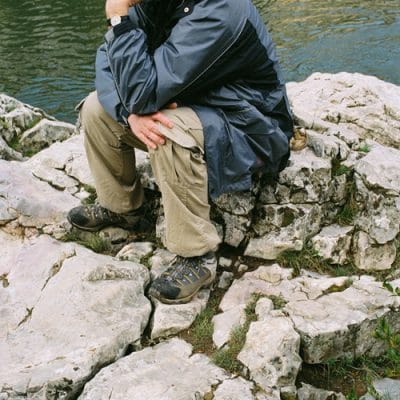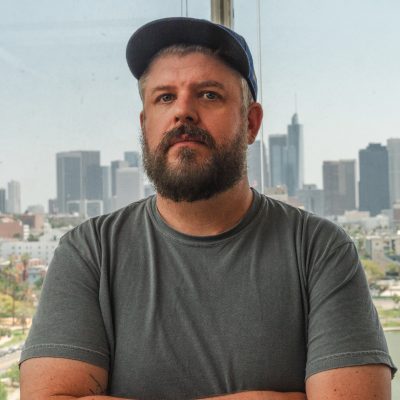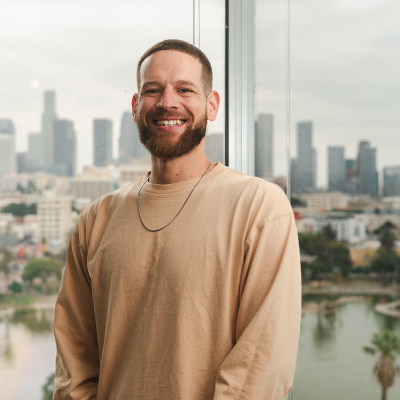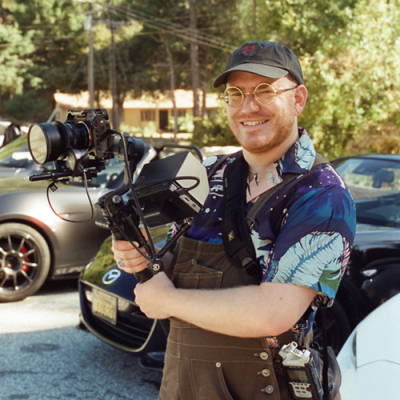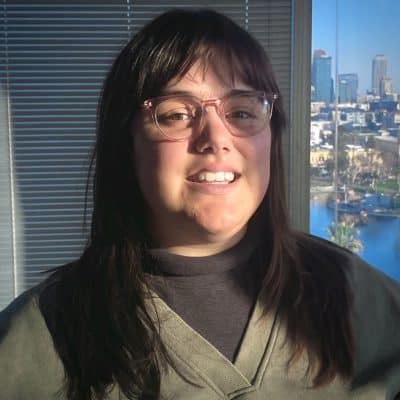Episode notes
Werner Herzog is an acclaimed (and prolific) film writer and director, known for narrative films like Aguirre, the Wrath of God as well as documentaries like Grizzly Man.
Herzog is known for pushing the boundaries of filmmaking and exploring humanity’s extremes.
His newest film is a 3D look into the Chauvet Caves of France, where the oldest known cave paintings exist, practically untouched over thousands of years. Cave of Forgotten Dreams is in theaters now.
JESSE THORN: It’s The Sound of Young America, I’m Jesse Thorn. Werner Herzog has always been known for pushing film making to its limits. His 60 feature films in 40 years have reveled in humanity at its extremes. From self taught naturalist Timothy Treadwell and the documentary Grizzly Man to crack-crazed madman Nicolas Cage in the crazy and fictional Bad Lieutenant: Port of Call New Orleans. In his latest film, he’s found a new human boundary to push: time.
Cave of Forgotten Dreams is a 3D look into the Chauvet Cave, home of the earliest known cave paintings in the world. With a tiny crew and jury-rigged 3D cameras, Herzog looks at some of the first images ever created. The caves are tightly controlled, only open to tiny groups of researchers approved in advance by the French government. It took Herzog years to obtain the permissions necessary to even bring in a skeleton crew. He takes this rare opportunity not just to present to us the beauty of the caves, and they are amazingly beautiful, but to consider what it means to create and how we define our own humanity. In this clip from the film, a research explains why the cave paintings are tucked so far back in the cave, and Herzog narrates his first look at a painting of a bear.
Werner Herzog, thank you so much for joining me on The Sound of Young America.
WERNER HERZOG: You’re very welcome.
Click here for a full transcript of this interview, or click here to stream or download the audio.
JESSE THORN: The first thing that struck me when I saw this film, even having read the New Yorker article that it was based upon, was how beautiful the cave paintings were. I wonder if you knew how beautiful they were before you started looking into the project?
WERNER HERZOG: I had no idea what was coming at me. The New Yorker article by Judith Thurman in a way triggered it, it’s not based on it. Based is more something like early in my adolescence when I was 12 years old, I was fascinated by a book on cave paintings. I wanted to buy the book so badly, and I worked in tennis courts as a ball boy just to be able to buy this book. This awe, this sense of wonder that I experienced when I was 12 has never left me, it was dormant. When asked if I was interested in doing something about a cave that had been discovered with great cave paintings, I said, what are you telling me? Yes, of course, yes yes yes! I want to do this film without even knowing exactly what the Chauvet Cave was all about.
JESSE THORN: Were you able to grasp when you were a teenager the immensity of the time scale?
WERNER HERZOG: That was probably part of it. Now the time scale is shifting significantly because from our time back to the Lascaux caves is only 13, 14, maybe 15 thousand years back in time. It’s a shorter distance from us to them than from Lascaux Cave to Chauvet, which is 35 thousand years back in time. It’s completely mind boggling. The passage of time is inconceivably fast when you look at the dating of some of the paintings, it’s completely mind boggling.
The kind of completely preserved time capsule Chauvet Cave was, discovered by three discoverers in 1994; a sensational find. The cave was completely sealed off by a cataclysmic rock slide; it sealed it off in this gorge of the Ardèche river. Since then you find fresh tracks of cave bears right next to where you can walk on a metal walkway; of course, you’ll never step onto it and superimpose your sneakers on it. You look at these fresh tracks and at the same time we know that the cave bear became extinct as a species more than 20 thousand years ago.
JESSE THORN: In the New Yorker article, there’s a little bit at the beginning where she describes that there have been 200 generations between our time and the beginning of recorded history, essentially, and that these cave paintings took place literally thousands of generations before that. I found myself, as I considered that, it was almost too big for me to handle. I started having an emotional reaction to it when I was just trying to be purely analytical.
WERNER HERZOG: There’s always a sense of awe. I think I pass this on to the audience. When you speak about generations, when you look at us and my children’s generation who all are into virtual realities on the internet; who are into video games, invented realities; who have seen reality TV, grew up with it; who have seen visual effects in movies, dinosaurs incredibly created. From one generation a perception of reality has shifted dramatically already. Now you go back in this amount of time, this recess of history and prehistory, unfathomable depths of time, it’s stunning to imagine, how did they see these images? How did they perceive?
This is why I go completely wild at the end of the film; there’s a postscript about spreading albino mutant crocodiles, which are not that far away from the caves – – in a biosphere next to a nuclear plant in the warm water for the cooling of the reactors, it warms the biosphere. By the way, as bizarre and surreal as this idea might be, that they would escape and spread out and to view these images, how would they see it? Reality has overtaken the wildness of my imagination. A few months ago six crocodiles escaped from the compound, there was a big hunt, helicopters had to be used. They recaptured all, but one is still unaccounted for. As wild as fantasies may go and the wildest science fiction, all of a sudden reality out does the surreal.
JESSE THORN: When you spent time with these paintings, and you only had short periods of time and had a very immense technical task for you in terms of filming in 3D in periods of just a couple of hours, I wonder how spending that time with something that was that old; that was so much before recorded history where you lose track of even the idea of generations and of individual people, whether that changed how you thought about yourself and particularly mortality and religion.
WERNER HERZOG: All these thoughts are only allowed afterwards. When you have only one week, and you have only four hours a day, you go in and work fast. You have to perform; you have to deliver, no matter what. I was only allowed three men with me, and inside the cave in semi-darkness, only illuminated by a few torches, we had to build and reconfigure our cameras. In 3D, when you have a wide shot, you have to have a certain distance of the levels; a certain distance of the eyes. However, when you are moving much closer, the eyes, the lenses, have to move much closer to each other and they even have to squint slightly. It is is high precision technology. You have three guys with you, and you have to be very very quick and it has to function so – – it was performing a duty. It was technical work, work and nothing else. You have to have a tunnel view.
Only afterwards you sit back and you are pondering about what are the origins of the modern human, you are witnessing it. What did these paintings mean for the people at their time? All this is mysterious, and we can only wonder.
JESSE THORN: How do you manage that as a filmmaker? You must have had some idea of what kind of film you wanted to make before you set out to do this incredibly complicated, time intensive, technical task of shooting these beautiful 3D images in four hour stretches.
WERNER HERZOG: You don’t do much thinking. You better do your job. Thinking comes either before or afterwords, not that much while you’re doing it.
JESSE THORN: What kind of thinking did you do beforehand and how did taking home these images and looking at them change what you had planned?
WERNER HERZOG: One of the main considerations was how do I pass on this kind of sense of awe to an audience? It is not easy, because in story telling you tell a story and it has certain rules; it has certain flows; it has certain rhythms. But a sense of awe, a sense of wonder, how do you pass that on? I prepared myself quite well in terms of knowledge of prehistoric art, not only of that cave, so that I had an argument, I had a real discourse with the scientists. I never act as an interviewer, I have no prepared questions, but I have knowledge, limited knowledge, but I’m having discourses with them and all of a sudden it becomes much more lively than just question, answer, question, answer.
JESSE THORN: You’re certainly not afraid to do a little poking when need be.
WERNER HERZOG: Of course, I do that. It’s a certain charm.
JESSE THORN: I knew that part of the limitations on the time that you could spend in this cave were related to the fact that any human activity inside disturbs something that can never be undisturbed.
WERNER HERZOG: It’s not a caprice by the scientists or by the ministry of culture to let you in. It’s of course time constrained, and also you see you can never touch anything. You really never ever step off the metal walkway. In one part, where you have charcoal paintings, underground there are faint traces of fir charcoal powder. You’re not even allowed to sneeze; if you sneeze you blow all this charcoal dust away, you blow the evidence away that has not been scientifically checked out yet.
JESSE THORN: What I didn’t know was that another reason you’re only allowed to spend a certain amount of time in the caves is for your own health. These caves, because of the radon and carbon dioxide literally poison you a little bit while you’re inside.
WERNER HERZOG: It’s only one cave, but it has two main branches at the end. One of these branches is slightly lower, and through the limestone, which is quite porous, CO2 seeps through, coming from the roots of trees. There’s a fairly high concentration which increases later on in spring when leaves are growing and in summer. The scientists would only converge and gather late in spring, March and early April. Of course, as precautions, they have oxygen masks, and it’s a very strict protocol how to behave if one man faints. Who is going to carry him out, and if the one who carries him out is also fainting. There’s a sequence of events that is very strictly rehearsed and set down as protocol. But it’s not that dangerous, let’s face it. However, I must say, after 40, 50 minutes, I felt woozy. I sat down and I knew this was enough, you better move out. There are of course guards with you and they would immediately do the right thing.
JESSE THORN: It’s interesting to me that both in the film and in practice in this cave you have to set up these intellectual structures that allow you to deal with the enormity of something that is too enormous to actually deal with directly, just like we have to figure out a way to deal with the fact that there are thousands upon thousands of generations, which is more than we can manage in our head. You also have to have a system to manage the idea of what happens if somebody collapses.
WERNER HERZOG: Yes, but again, it’s not that serious. There’s parts where you have radon gas, radioactive gas, it only becomes troublesome if you spend a real long time in this place. It has an accumulative effect in your lungs, otherwise not so wild. But how do we approach this whole project, and of course I’m not approaching it as an accountant of facts, which you see a lot in documentaries these days. I go in it as a poet, and my understanding is the understanding of poetry, and even if you have a wild end with albino mutant crocodiles, it’s just to intrigue an audience to follow me into the wildest poetry and the wildest imaginations of science fiction, almost.
JESSE THORN: Werner, thank you so much for taking the time.
WERNER HERZOG: You’re very welcome.
JESSE THORN: Werner Herzog’s new documentary is Cave of Forgotten Dreams. It’s in theaters this week.
Our transcripts are provided by Sean Sampson. If you’re interested in contacting him for transcription work, email him here.
In this episode...
Guests
- Werner Herzog
About the show
Bullseye is a celebration of the best of arts and culture in public radio form. Host Jesse Thorn sifts the wheat from the chaff to bring you in-depth interviews with the most revered and revolutionary minds in our culture.
Bullseye has been featured in Time, The New York Times, GQ and McSweeney’s, which called it “the kind of show people listen to in a more perfect world.” Since April 2013, the show has been distributed by NPR.
If you would like to pitch a guest for Bullseye, please CLICK HERE. You can also follow Bullseye on Twitter, YouTube, and Facebook. For more about Bullseye and to see a list of stations that carry it, please click here.
Get in touch with the show
People
How to listen
Stream or download episodes directly from our website, or listen via your favorite podcatcher!
